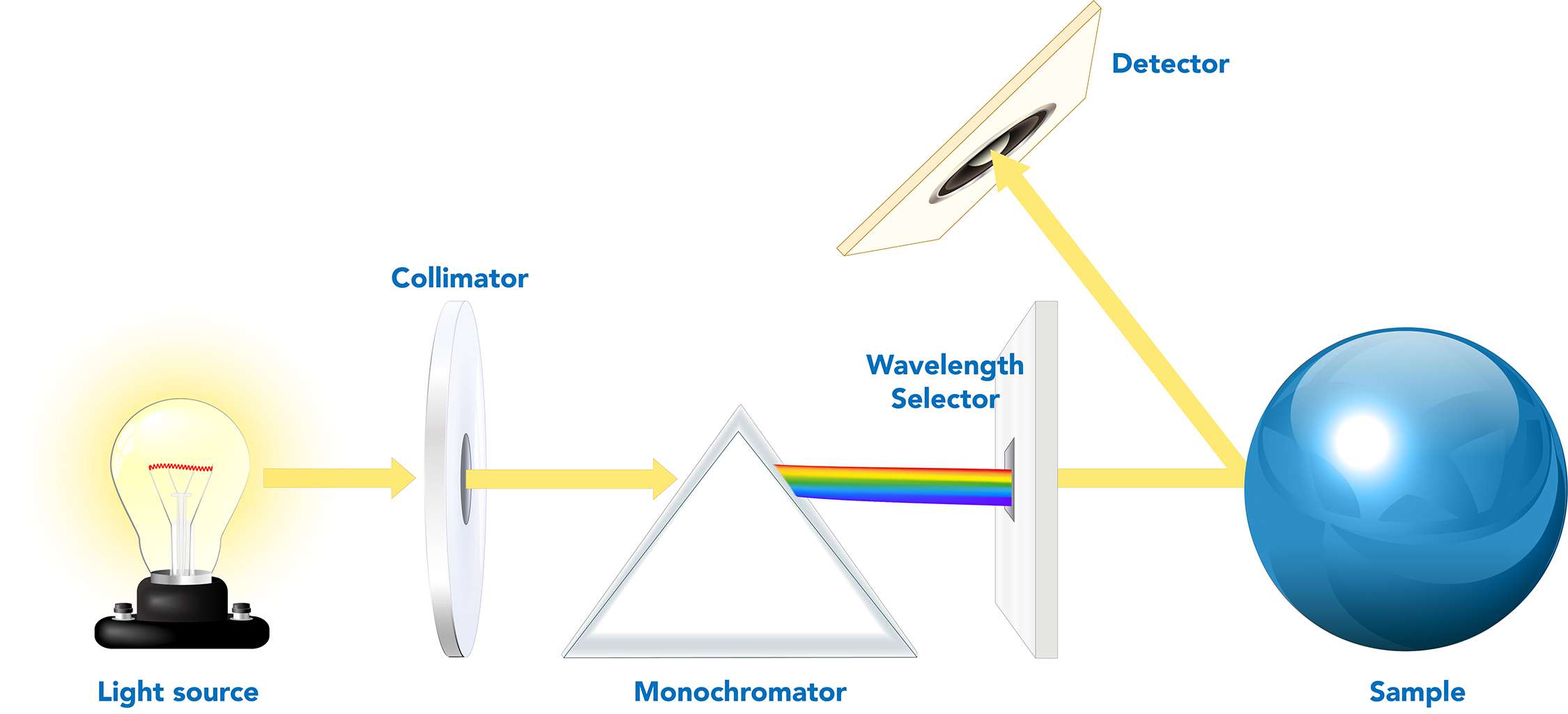You may remember from chemistry class that light is a form of electromagnetic radiation, like microwaves and gamma rays. When we talk about the spectrum of light, we’re talking about a spectrum of energy, where different energy levels create what we perceive as other colors. The colors of the rainbow follow the progression of visible energy, with red being the lowest and violet being the highest. Materials that absorb all visible light appear black, while those that do the opposite appear white. In between those two are materials that emit certain light energies and absorb others, displaying specific colors. What Is a Spectrophotometer? A spectrophotometer is essentially a calibrated light counter.
“Spectro” refers to the fact that light is dispersed into individual wavelengths in the electromagnetic energy spectrum. Some of that energy is in the ultraviolet and visible spectrum, which spectrophotometers can read, while other spectrometers can measure infrared radiation.
“Photometer” measures light intensity at specific wavelengths and is scaled from 0 to 100. Zero equals total darkness, and 100 is perfect white. Some properties, like fluorescence, make it possible for this scale to go over 100, so most spectrophotometers can reach 150 or 200.

Spectrophotometers are used to measure the color of materials. Materials can be solid, liquid, opaque, translucent, or transparent. Different methods are used to measure these materials, depending on their form and transparency. Opaque materials are measured using reflectance spectrophotometers, which measure the amount of light reflected from a sample. In contrast, transparent materials use transmission spectrophotometers, which measure the amount of light that passes through the material. Regardless of the method used, all spectrophotometers share the same basic technology and optical design:
- A controlled light source to illuminate the material.
- A lens to collimate the light to the monochromator.
- A monochromator that separates the light into its constituent color wavelengths.
- A wavelength selector.
- A detector that quantifies the light emitted from the sample.
- A display that provides results.




